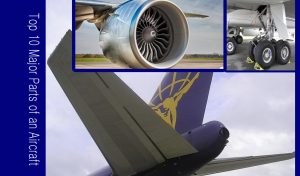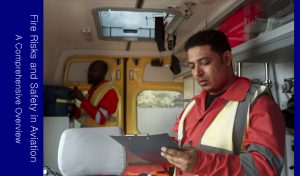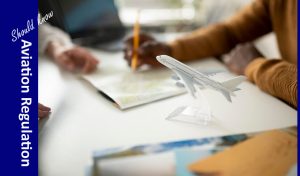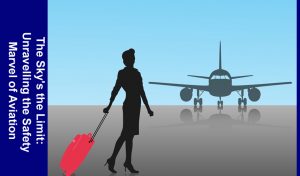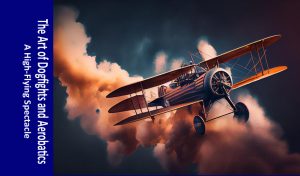Judging and scoring aerobatic competitions is a critical aspect of ensuring fairness and accuracy in the sport of aerobatics. Whether you’re a pilot, judge, or simply an enthusiast looking to gain insights into the process, this insider’s guide will provide you with a comprehensive overview of how aerobatic competitions are judged and scored.
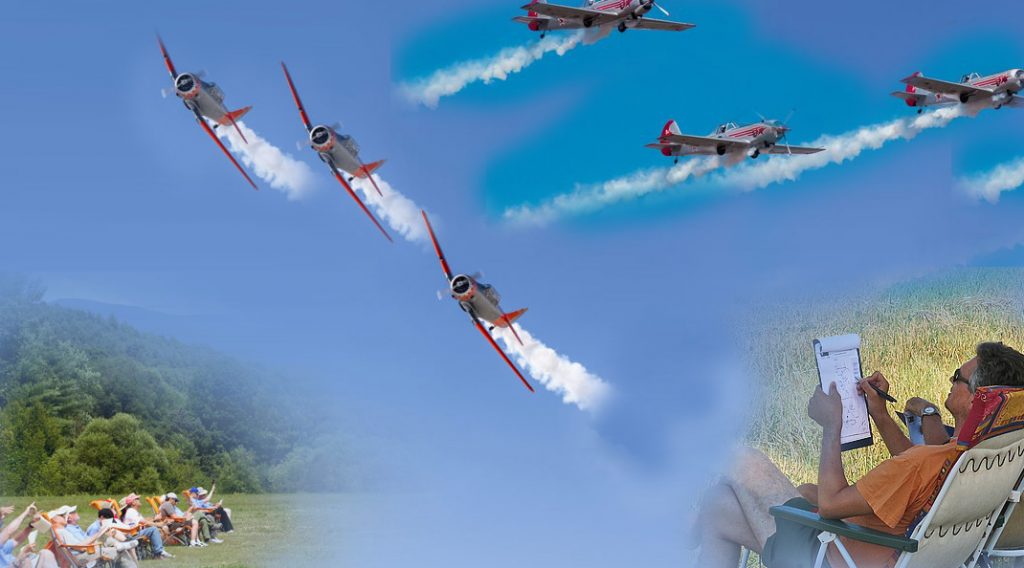
1. Understanding the Basics:
- Aerobatics Categories: Aerobatic competitions typically involve several categories, such as Sportsman, Intermediate, Advanced, and Unlimited, each with specific requirements for maneuvers and levels of difficulty.
- Aerobatic Box: The competition takes place within a designated “box” in the sky, usually 1,000 meters wide, 1,000 meters long, and 500 meters high. Pilots must perform their sequences entirely within this space.
- Judging Panel: A panel of experienced judges evaluates each performance. The number of judges can vary, but there are usually three to five judges, each with a specific role.
2. The Scoring System:
Aerobatic competitions involve highly skilled pilots performing precise maneuvers and sequences in aircraft, often to demonstrate their flying skills and mastery of their aircraft. The scoring system in aerobatic competitions is designed to evaluate and rank these performances fairly and objectively. The specific rules and scoring criteria can vary slightly between different organizations and categories of aerobatic competitions, but the basic principles remain consistent. Here’s an overview of the scoring system in aerobatic competitions:
- Judges and Scoring Panels:
- A panel of judges evaluates each pilot’s performance. The number of judges on the panel can vary but is typically an odd number to avoid ties.
- Judges are trained and experienced aerobatic pilots or experts who are familiar with the specific rules and criteria for the competition category.
- Scoring Criteria:
- Each maneuver or figure in an aerobatic sequence is assigned a specific maximum number of points based on its difficulty and precision.
- Judges evaluate each maneuver for the following key criteria:
- Precision: How closely the pilot adheres to the specified parameters of the maneuver, including altitude, heading, speed, and angle of bank.
- Positioning: The accuracy of the aircraft in relation to designated reference points or lines in the sky.
- Timing: The execution of each element at the correct point in the sequence, including entry and exit points for maneuvers.
- Smoothness: The fluidity and smoothness of transitions between maneuvers without abrupt changes in attitude or speed.
- Symmetry: For symmetrical maneuvers, judges assess how closely the aircraft is mirrored on both sides during the maneuver.
- Scoring Scale:
- Judges assign a score for each maneuver on a predetermined scale, often ranging from 0 to 10, with 10 being perfect.
- Fractional scores (e.g., 8.5) are common to allow for finer distinctions in performance quality.
- Penalties may be assessed for deviations from the specified parameters, including exceeding altitude limits, overbanking, or poor positioning.
- Difficulty Factors:
- Some maneuvers are designated as “known” and have fixed maximum scores. Others are considered “unknown” and may receive a difficulty factor that multiplies the base score to reward pilots for performing more challenging sequences.
- Presentation and Overall Impression:
- Judges also consider the overall impression of the flight, including the pilot’s ability to maintain a consistent and appropriate altitude, pace, and attitude throughout the sequence.
- The pilot’s showmanship, confidence, and engagement with the audience can also influence the overall impression score.
- Final Score:
- The total score for a pilot’s performance is the sum of the scores for each individual maneuver, taking into account any penalties and difficulty factors.
- The pilot with the highest total score is the winner of the competition.
Aerobatic competitions typically have different categories and classes, such as Sportsman, Intermediate, Advanced, and Unlimited, each with its own set of rules and scoring criteria. The goal of these competitions is to showcase both the precision and artistry of aerobatic flying while ensuring a fair and objective evaluation of pilot performances.

3. Judging Components:
Aerobatic competitions involve a complex judging process to assess the precision and quality of a pilot’s aerobatic maneuvers and sequences. Judges evaluate various components of a pilot’s performance to assign scores and determine the winner. Here are the main judging components in aerobatic competitions:
- Figure or Maneuver Execution:
- Judges evaluate the pilot’s execution of each individual maneuver or figure in the sequence.
- They assess how accurately the pilot adheres to the specified parameters for altitude, heading, speed, angle of bank, and other criteria.
- Precision in executing each maneuver is a crucial aspect of scoring.
- Positioning:
- Judges assess how well the pilot positions the aircraft in relation to designated reference points or lines in the sky.
- Proper positioning is essential for maintaining the required geometry and alignment during the sequence.
- Timing:
- Timing is a critical aspect of aerobatic performance. Judges evaluate whether the pilot executes each element of the sequence at the correct point in time.
- This includes the entry and exit points for maneuvers, as well as the timing of rolls, loops, and other elements.
- Smoothness:
- Judges look for smooth transitions between maneuvers. Abrupt changes in attitude, speed, or altitude can lead to deductions.
- Smoothness in transitions enhances the overall quality of the performance.
- Symmetry (for Symmetrical Figures):
- In sequences that involve symmetrical maneuvers (where the aircraft performs similar maneuvers on both sides), judges assess how closely the aircraft is mirrored on each side.
- Any deviations from perfect symmetry can result in deductions.
- Energy Management:
- Judges may consider the pilot’s ability to manage energy throughout the sequence, particularly in unlimited and advanced categories where high-energy maneuvers are common.
- Proper energy management ensures that the aircraft has the necessary speed and altitude for each element.
- Difficulty and Presentation:
- Judges take into account the difficulty of the maneuvers performed. More complex and challenging sequences may receive higher scores.
- Presentation and showmanship are also considered. Pilots who engage with the audience, maintain a consistent pace, and exhibit confidence may receive higher scores for overall impression.
- Safety and Rules Compliance:
- Judges ensure that pilots adhere to safety regulations and competition rules.
- Any violations or unsafe behavior can result in penalties or disqualification.
- Overall Impression:
- Judges evaluate the overall impression of the flight, considering all the above components.
- This component reflects the pilot’s ability to deliver a polished and captivating performance.
- Penalties and Deductions:
- Judges may assess penalties for significant deviations from the specified parameters or safety violations.
- Deductions can affect the final score and ranking of a pilot.
The scoring process involves multiple judges independently assessing each component of a pilot’s performance. The scores are then combined to calculate the pilot’s total score for the flight. The pilot with the highest total score is declared the winner of the competition. Aerobatic competitions use a precise and structured scoring system to ensure fair and objective evaluations of each pilot’s skills and performance.
4. The Judging Process:
The judging process in aerobatic competitions is a rigorous and structured procedure designed to assess and score the precision and quality of a pilot’s aerobatic maneuvers and sequences. Here is an overview of the typical judging process in aerobatic competitions:
- Pre-Flight Briefing:
- Before the competition begins, judges receive a detailed briefing that includes information about the sequence of maneuvers, scoring criteria, and safety regulations.
- Judges review the sequence diagrams and descriptions to understand the specific maneuvers the pilots will be performing.
- Scoring Panels:
- Competitions typically have a panel of judges, often an odd number to avoid ties. The number of judges can vary depending on the level and category of the competition.
- Judges are experienced aerobatic pilots or experts who are well-versed in the competition’s rules and scoring criteria.
- Scoring Sheets and Tools:
- Judges use scoring sheets to record their assessments for each pilot’s performance.
- They may use tools such as binoculars and stopwatches to assist in evaluating the precision of maneuvers and timing.
- Pilot Briefing:
- Pilots receive a briefing before their flight to review the order of flight, the sequence to be performed, and any specific instructions or announcements.
- Pilots may have an opportunity to ask questions or seek clarifications from the Chief Judge or competition officials.
- Flights and Scoring:
- Pilots take off and perform their aerobatic sequences in front of the judging panel and often a ground-based audience.
- Each judge independently evaluates the pilot’s performance based on the established scoring criteria, assessing factors such as precision, positioning, timing, smoothness, symmetry, and overall impression.
- Judges assign scores for each maneuver or figure, taking into account any penalties or deductions for deviations from the prescribed parameters.
- Judges may use a numerical scale (e.g., 0 to 10) or assign fractional scores to allow for fine distinctions in performance quality.
- Chief Judge and Scrutineer:
- The Chief Judge oversees the judging panel, ensuring that the scoring process runs smoothly and consistently.
- A scrutineer may assist the Chief Judge in monitoring the accuracy of scores, checking for any mathematical errors or discrepancies in the scoring sheets.
- Total Scores and Ranking:
- After each pilot’s flight, judges submit their scores to the Chief Judge or scrutineer, who calculates the total score for the flight.
- The pilot with the highest total score is typically declared the winner of the competition.
- Awards and Results:
- Once all pilots have completed their flights, the competition organizers announce the results and present awards to the top-performing pilots in each category.
- Feedback and Debriefing:
- Judges may participate in a debriefing session after the competition to discuss their assessments, share insights, and provide feedback to the pilots.
- This feedback helps pilots understand their strengths and areas for improvement.
The judging process in aerobatic competitions is thorough and objective, with the goal of rewarding pilots for their precision and skill while maintaining safety and fairness in the competition. Judges play a critical role in ensuring that each pilot’s performance is assessed accurately and consistently.
In Conclusion, Aerobatic judging and scoring require a deep understanding of aerodynamics, precision, and safety. It’s a challenging but rewarding task that ensures the sport’s integrity and fairness. Whether you’re a pilot or aspiring judge, continuous learning and practice are essential for success in the world of aerobatic competitions.
–Tips for Pilots–
Here are a few tips for pilots who want to impress the judges and improve their chances of winning:
- Practice, practice, practice! The more you practice, the more accurate and smooth your flying will be.
- Design a well-choreographed sequence. Make sure that your sequence flows well and that your maneuvers are arranged in a way that is both visually appealing and challenging.
- Use music and choreography effectively. Music can help to set the tone for your sequence and make it more engaging for the judges. Choreography can help to add flow and visual interest to your performance.
- Be confident and showmanship! The judges want to see that you are enjoying yourself and that you are passionate about aerobatics. Let your personality shine through and give the judges a performance that they will remember.
Aerobatic competitions are a challenging but rewarding experience. By understanding the judging and scoring process, pilots can improve their chances of success and put on a performance that will impress the judges and the crowd alike.
